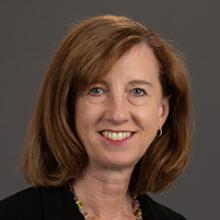Three Things We Learned from the Study of School Turnaround
The expanded School Improvement Grant (SIG) program represented an ambitious federal plan to stimulate rapid improvement of our nation’s chronically low-performing schools. In 2010, more than 1,000 schools nationwide received the first installment of a $4 billion federal effort to turn around schools consistently in the bottom 5 percent in student achievement levels and graduation rates.
SIG was infused with substantial new funding through the American Recovery and Reinvestment Act of 2009. With these new funds came new requirements to implement SIG “models.” Broadly, schools receiving SIG awards were required to replace the principal, extend the instructional day or year, promote continuous use of data, provide social-emotional supports, engage teachers in job-embedded professional development, and, in some cases, replace up to half of its teachers. Although all SIG schools received additional funds, for some the amount represented a mere 3 percent per-pupil increase. Elsewhere, the SIG constituted a 58 percent increase per pupil.
Over SIG’s first three years, as part of the Study of School Turnaround, my colleagues and I visited 25 SIG schools to interview district officials, principals, teachers, instructional coaches, parents, and students. We wanted to learn about SIG as it was being implemented, to understand efforts to reverse histories of low performance, and to let schools tell their stories.
So what have we learned? The full story of SIG’s impact has yet to be written – for that, we must wait for the release of the final national impact evaluation report later this year. But important lessons—some encouraging, some sobering—do emerge from our case study schools.
1. We learned—not for the first time—that dramatic school improvement is possible but remarkably difficult, even with a large infusion of funds. A few case-study schools provided strong evidence from teachers, students, and administrators that things had really changed for the better. These schools—that had struggled against all odds—managed to bring about what teachers and students described as a “night and day” contrast in their schools. In such schools, large percentages of teacher survey respondents reported that their schools had improved over all three years of SIG.
Audio: Dr. Le Floch gives an overview of the results from The Study of School Turnaround.
2. Schools that worked hard to improve human capital also saw improvement in organizational capacity, an important building block of school success. This might seem obvious, but school reform studies more often tell the story of failed attempts at school change. At least among our case-study schools, we found that those that worked hard to improve human capital (aligning hiring strategies with school needs, providing professional development in a purposeful way, adding support staff) also showed improvements in organizational capacity. And, the indicators in our measures of organizational capacity (including strategic leadership, program coherence, and trust) are important precursors to improved student achievement. (However, the case study methodology does not permit causal claims.)
Audio: Dr. Le Floch discusses the need for improved human capital in schools.
3. These improvements appear quite fragile. Of all of the schools we followed, only two appear well-positioned to sustain their improvements. The others exhibited a range of risk factors (loss of staff, say, or lack of district support) that collectively suggest, as one principal put it, “that some of this is going to go down the gutter.” Most disappointing were the schools whose well-liked principals were abruptly removed. Indeed, leadership turnover appeared to be a challenge in our case study schools: only three schools retained the same principal for all three years of SIG.
Audio: Dr. Le Floch shares insights on why sustaining school improvement can be so difficult.
Although the SIG program will expire as ESSA is implemented, the challenges of low-performing schools have not. As long as we have schools that persistently fail to meet their students’ often challenging needs, policymakers, researchers, and practitioners must continue to seek solutions. SIG has provided some promising examples, as well as caveats that can challenge and inform those of us who believe our nation’s most disadvantaged students deserve better.
Audio: Dr. LeFloch describes how she became involved in school improvement research and a personal observation on high vs low-performing schools.
Kerstin Carlson Le Floch is a managing researcher at AIR. Her work focuses on federal policy implementation and support for low-performing schools
